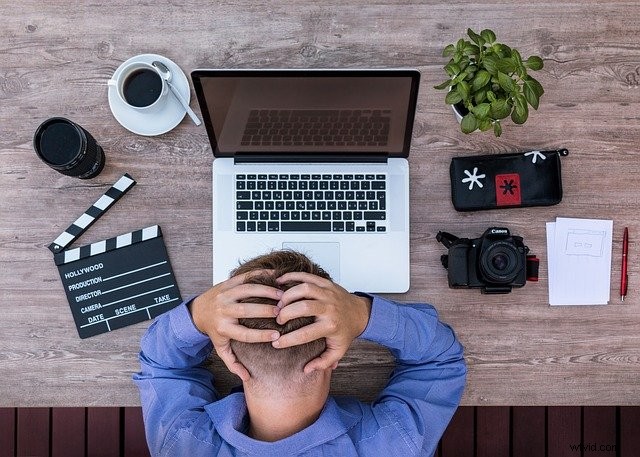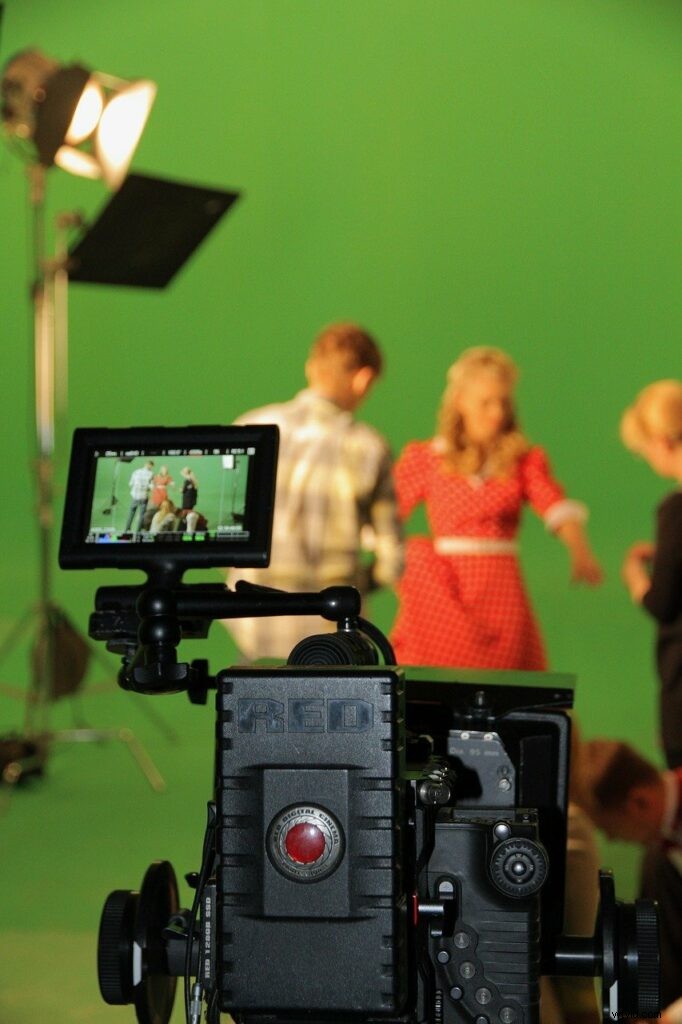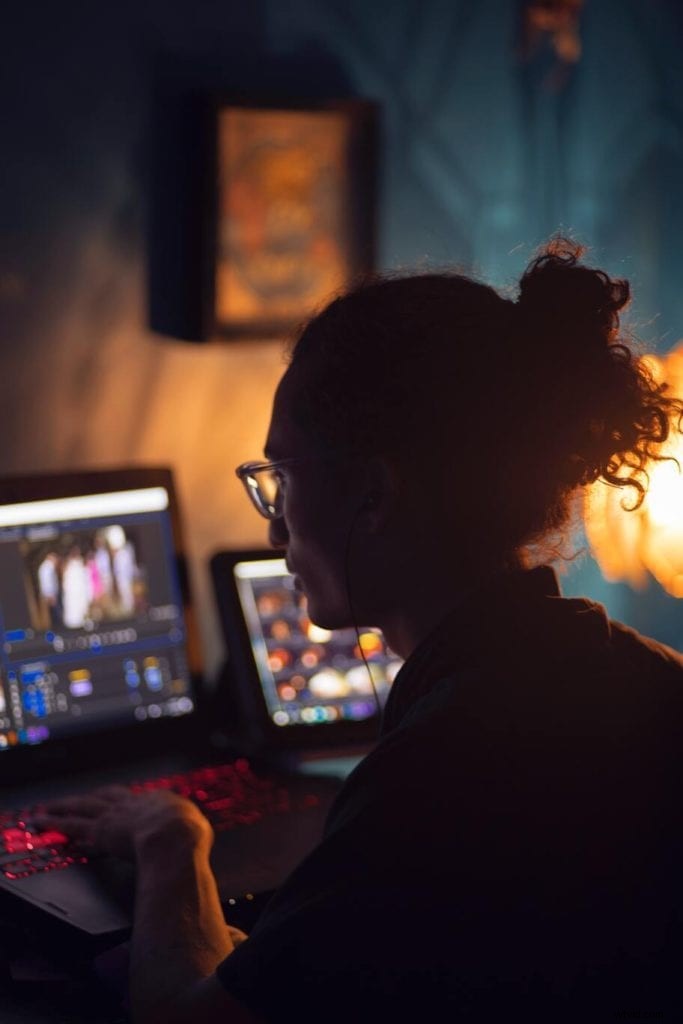Mentre la maggior parte delle produzioni video può raggiungere costi incredibili, una produzione a basso budget è un video girato senza alcun budget esterno da un individuo o da un importante studio cinematografico.
Anche la maggior parte dei film indipendenti è realizzata con un budget basso, ma anche i film più professionali diretti da registi esperti e professionisti possono avere budget bassi. L'editing video, il suono, l'illuminazione e la computer grafica utilizzati nella produzione video di questo tipo di solito costano meno della metà dell'importo normalmente associato a questi elementi.
Scopriamo come puoi tagliare i costi e realizzare comunque un film decente.
Quanto costa fare un film?
Molti registi a basso budget hanno difficoltà perché non hanno le risorse per completare i loro video. E questo non è sorprendente. Il costo medio per realizzare un film è di circa $ 100 milioni, compresa la produzione, la distribuzione e il marketing. Anche il costo di un film indipendente medio è di circa $ 2 milioni. Tuttavia, anche con un budget basso, puoi dare vita alle tue idee. Potresti essere sorpreso, ma successi come Rocky, The Blair Witch Project, e Attività paranormali non disponeva di un budget enorme rispetto ai giorni nostri.
Il termine low budget di solito si riferisce a film con un budget compreso tra $ 400.000 e $ 2 milioni. Tutto ciò che è inferiore a $ 400.000 è considerato un microbudget. In questo articolo, usiamo questi termini in modo intercambiabile e ci concentriamo maggiormente sui modi per pianificare il tuo budget in modo più saggio.
Realizzare un budget:i primi passi
Se sei un regista in erba, allora devi sapere ormai che imparare a risparmiare denaro è una delle cose essenziali che devi fare. E prima di iniziare a eliminare ogni elemento dell'elenco da mantenere entro i propri mezzi, devi fare alcune valutazioni.
Avere una visione chiara
La prima cosa che devi fare è capire quale risultato ti aspetti. Quando avrai uno script completo, sarà più facile valutare i costi. Inoltre, ti farà risparmiare tempo e denaro modificando e rieditando il prodotto finale. Soprattutto se hai qualcun altro per compilare le bozze, devi fornire loro un piano chiaro di ciò che vuoi vedere alla fine.
Definisci il tuo budget
Il budget e la pianificazione sono assolutamente essenziali nel cinema a basso budget. Devi stimare quanti soldi puoi spendere e quali sono le tue necessità. Il piano dovrebbe includere le seguenti cose:
- stipendio per l'equipaggio
- affitto location
- costumi e oggetti di scena
- colonna sonora
- strumenti di produzione video
- apparecchiature per l'editing video
Definisci le tue priorità
Quando hai un budget limitato, uno dei modi per ridurre i costi è acquistare forniture cinematografiche a basso budget, un altro:trovare attori universitari in modo da poterli pagare di meno. Tuttavia, ogni decisione di budget che prendi può influenzare il risultato dell'intero progetto. You need to get your priorities straight regarding what you can do without and what you can’t. Low-budget films do not have the capital to acquire expensive equipment, and filmmakers often work with bare necessities, so you may need to be able to improvise where you can. The more research you do before the actual filmmaking, the better chance you’ll have to complete your projects. Think about all the items on the list carefully so you can produce a high-quality video without breaking the bank.
Cutting costs:best practices
These tips cover the basics in regards to finding the best locations to shoot movies, hiring the right crew members, cutting costs on editing, and still capturing the interest of your audience so that you will make a profit after your film is completed.
Salary
It’s really unlikely that you can find unpaid labor for your project. So, unless you’re going to do all the job by yourself, you have to consider the amount of money you can afford to pay to your crew. Actors, scriptwriters, videographers, costume designers, camera operators, gaffers, makeup artists – there are a lot of people involved in filmmaking. There are basically two ways to save money:
- Hire fewer people. In this case, however, someone will have to be responsible for several things, which may lead to misunderstandings, missing deadlines, etc.
- Hire students so you can pay less. Undergraduates are eager to get some real work experience, and you will get highly motivated team members.

Location
The second item that can eat up your budget is the place of filming. Renting out the professional studio can cost you an arm and a leg, so if you want to spend less, you will have to wake up your inner negotiator. On the other hand, if your movie plot is set in modern surroundings, you can film outside or in local shops, cafes, bars, and offices. The owners will probably agree to a lower price or even let you film for free – after all, it is a kind of advertising for their business.
Costumes &props
There are a lot of things that you can do to get more out of your low-budget filmmaking endeavor. For one, you can cut down on unnecessary set additions and wardrobe changes. Alternatively, your actors can do their makeup themselves, so you have one less person to pay to.
As for props, you can use the ones the location has or check out thrift stores to find the stuff you need. Another way out is to rent costumes and props; the price is usually lower than if buying such things.
Soundtrack
In addition to spending as little on props as possible, another important aspect of low-budget filmmaking is trying to find local musicians to participate in your film’s production. While some filmmakers choose not to use music at all, others realize that having original music adds an extra dimension to the movie. As a result, low-budget filmmaking can turn into a collaborative process between the director, the actors, the crew, and local music bands to provide the best content possible. Not only will this add another layer of credibility to your film, but it will also save you a ton of money.
Equipment
Don’t waste your budget on expensive equipment. While it is true that you need to have all the right equipment for your film, you shouldn’t spend giant sums of money on it. What you need to know is how to use those items effectively. Learn how to use the equipment that is available to you, but do not compromise in other areas for image quality.
The most important piece of filmmaking equipment is the camera. Of course, the obvious choice would be a cinema camera because of its extensive features, but here comes the price factor. You will need a whole extra set of accessories and gear to make the most of the camera’s abilities.
Filmmaking on a budget doesn’t mean that you have to compromise on the quality of the product. On the contrary, there are various cameras available that can help you save money while still giving you professional results. So, before you invest in a camera, research the market and compare several options that have the features that satisfy you. You may also find a more reasonable solution among DSLRs and mirrorless cameras. Plus, you can now get high-quality footage even with an iPhone.
Don’t forget that your camera will need some accessories to make the filming process more convenient:
- tripods or gimbals for image stabilization
- lenses for different shots
- cleaning accessories and batteries
- extra memory cards
The next stop is the lighting. It is one of the biggest factors that contribute to filmmaking. You can always use the lights that the location provides, but extra lighting equipment can drastically affect the overall image. If you plan to shoot your video outdoors, then you will have to have a reliable source of lighting during the day. When it comes to shooting indoors, you should take care of the ambient lights and reflectors to bounce back the light to illuminate the scene.

The last essential piece of equipment responsible for the high quality of your project is external microphones. No matter what camera you have, it’s better to record the sound separately, for example, with a lavalier microphone. You can easily clip them into clothes and masks so that they don’t get in the frame. External microphones will provide a better sound quality, plus you don’t have to spend time recording a voice-over afterward.
Other filmmaking equipment includes various special effects machines, Chroma key screens, dolly zoom tripods, etc. While most of these things will only eat up your budget, a green screen seems a reasonable investment, as you can replace backgrounds in post-production and save on the location.
Editing
When working on a tight budget, you must learn the basic videography tricks, as you probably would like to do the editing yourself. It involves cutting and joining footage, choosing the right transitions between shots, color grading, and other techniques.

If you really want to save money on filmmaking, look no further than your computer. There are plenty of great editing software applications available for purchase, and there are plenty of free online resources that can help you edit your project too. Most online editors are obviously not as fancy as professional software, but they still can do their job properly. You can upload your footage, work with several tracks, and perform all the editing within a browser.
Final Say:The Checklist
Learning how to save money on filmmaking has been discussed in some depth before. However, these tips are the most important ones to consider in order to make the most of your filmmaking career. So let’s revise them one more time:
- Carefully plan your budget and consider all the costs.
- Have a finished script before you start filming to avoid extra days of shooting, therefore, payments.
- The list of possible costs includes salaries, location rent, equipment, costumes, and props.
- You can save money by hiring students and local musicians instead of somewhat famous names.
- Don’t be too shy or proud to look for the equipment you need on sale or buy second-hand tools.
- Learn how to edit videos yourself. You can easily rely on YouTube tutorials to find out all the basics and advanced techniques.
- Regarding post-production, you can also use our online subtitle generator that saves you time and money in the process!
If you take all of these into consideration, you’re most likely to save a lot of money when you make your first-ever movie!
